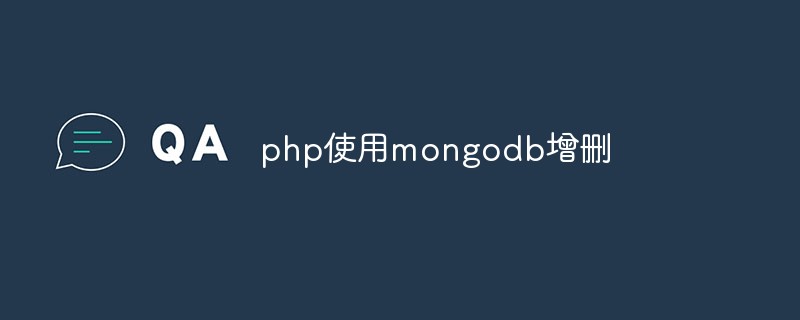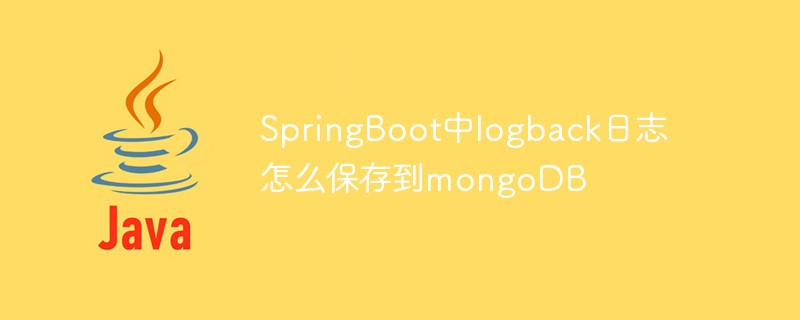How to open the MongoDB database: Determine the database port (default 27017) Use mongo shell to connect to the database Select the database to open (use
) Verify the connection (db.stats())

How to open MongoDB database
MongoDB is a popular non-relational database used to store and manage large amounts of data. To open a MongoDB database, follow these steps:
1. Determine the database port
MongoDB runs on port 27017 by default. However, you can specify a different port when starting MongoDB. To determine which port is in use, use the following command:
<code>ps -aux | grep mongod</code>
The output will show the MongoDB process, including the port it is listening on.
2. Use mongo shell to connect
mongo shell is a command line interface used to manage and query the MongoDB database. To connect to the database, use the following command:
<code>mongo</code>
This will open a session on localhost, listening on port 27017. If you are using a different port, specify it:
<code>mongo --port <port number></port></code>
3. Select a database
After connecting to MongoDB, you need to select the database you want to open. Use the use command, followed by the database name:
<code>use <database name></database></code>
For example, to open a database named "myDatabase", use:
<code>use myDatabase</code>
4. Verify the connection
To verify that you have successfully connected to the database, use the following command:
<code>db.stats()</code>
This will output information about the status of the current database.
Additional Notes:
- If you have problems opening the database, check your firewall settings and make sure the MongoDB process is running.
- You can use the show dbs command to view all available databases.
- You can use the create command to create a new database.
The above is the detailed content of How to open the database in mongodb. For more information, please follow other related articles on the PHP Chinese website!
 mongodb php 扩展没有怎么办Nov 06, 2022 am 09:10 AM
mongodb php 扩展没有怎么办Nov 06, 2022 am 09:10 AMmongodb php扩展没有的解决办法:1、在linux中执行“$ sudo pecl install mongo”命令来安装MongoDB的PHP扩展驱动;2、在window中,下载php mongodb驱动二进制包,然后在“php.ini”文件中配置“extension=php_mongo.dll”即可。
 Redis和MongoDB的区别与使用场景May 11, 2023 am 08:22 AM
Redis和MongoDB的区别与使用场景May 11, 2023 am 08:22 AMRedis和MongoDB都是流行的开源NoSQL数据库,但它们的设计理念和使用场景有所不同。本文将重点介绍Redis和MongoDB的区别和使用场景。Redis和MongoDB简介Redis是一个高性能的数据存储系统,常被用作缓存和消息中间件。Redis以内存为主要存储介质,但它也支持将数据持久化到磁盘上。Redis是一款键值数据库,它支持多种数据结构(例
 Go语言中使用MongoDB:完整指南Jun 17, 2023 pm 06:14 PM
Go语言中使用MongoDB:完整指南Jun 17, 2023 pm 06:14 PMMongoDB是一种高性能、开源、文档型的NoSQL数据库,被广泛应用于Web应用、大数据以及云计算领域。而Go语言则是一种快速、开发效率高、代码可维护性强的编程语言。本文将为您完整介绍如何在Go语言中使用MongoDB。一、安装MongoDB在使用MongoDB之前,需要先在您的系统中安装MongoDB。在Linux系统下,可以通过如下命令安装:sudo
 php7.0怎么安装mongo扩展Nov 21, 2022 am 10:25 AM
php7.0怎么安装mongo扩展Nov 21, 2022 am 10:25 AMphp7.0安装mongo扩展的方法:1、创建mongodb用户组和用户;2、下载mongodb源码包,并将源码包放到“/usr/local/src/”目录下;3、进入“src/”目录;4、解压源码包;5、创建mongodb文件目录;6、将文件复制到“mongodb/”目录;7、创建mongodb配置文件并修改配置即可。
 php怎么使用mongodb进行增删查改操作Mar 28, 2023 pm 03:00 PM
php怎么使用mongodb进行增删查改操作Mar 28, 2023 pm 03:00 PMMongoDB作为一款流行的NoSQL数据库,已经被广泛应用于各种大型Web应用和企业级应用中。而PHP语言也作为一种流行的Web编程语言,与MongoDB的结合也变得越来越重要。在本文中,我们将会学习如何使用PHP语言操作MongoDB数据库进行增删查改的操作。
 SpringBoot中logback日志怎么保存到mongoDBMay 18, 2023 pm 07:01 PM
SpringBoot中logback日志怎么保存到mongoDBMay 18, 2023 pm 07:01 PM自定义Appender非常简单,继承一下AppenderBase类即可。可以看到有个AppenderBase,有个UnsynchronizedAppenderBase,还有个AsyncAppenderBase继承了UnsynchronizedAppenderBase。从名字就能看出来区别,异步的、普通的、不加锁的。我们定义一个MongoDBAppender继承UnsynchronizedAppenderBasepublicclassMongoDBAppenderextendsUnsynchron
 SpringBoot怎么整合Mongodb实现增删查改May 13, 2023 pm 02:07 PM
SpringBoot怎么整合Mongodb实现增删查改May 13, 2023 pm 02:07 PM一、什么是MongoDBMongoDB与我们之前熟知的关系型数据库(MySQL、Oracle)不同,MongoDB是一个文档数据库,它具有所需的可伸缩性和灵活性,以及所需的查询和索引。MongoDB将数据存储在灵活的、类似JSON的文档中,这意味着文档的字段可能因文档而异,数据结构也会随着时间的推移而改变。文档模型映射到应用程序代码中的对象,使数据易于处理。MongoDB是一个以分布式数据库为核心的数据库,因此高可用性、横向扩展和地理分布是内置的,并且易于使用。况且,MongoDB是免费的,开源
 PHP实现MongoDB数据库可用性的方法May 16, 2023 am 10:01 AM
PHP实现MongoDB数据库可用性的方法May 16, 2023 am 10:01 AM随着互联网技术的不断发展,大数据成为企业发展的重要资产。而对于企业来说,数据的可用性和安全性至关重要。MongoDB是一个高性能、高可用性的NoSQL数据库,越来越受到企业的青睐。然而,MongoDB的可用性也是企业关注的焦点之一,本文将介绍PHP实现MongoDB数据库可用性的方法。一、了解MongoDB的高可用性特性MongoDB作为NoSQL数据库,具


Hot AI Tools

Undresser.AI Undress
AI-powered app for creating realistic nude photos

AI Clothes Remover
Online AI tool for removing clothes from photos.

Undress AI Tool
Undress images for free

Clothoff.io
AI clothes remover

AI Hentai Generator
Generate AI Hentai for free.

Hot Article

Hot Tools

Dreamweaver Mac version
Visual web development tools

MinGW - Minimalist GNU for Windows
This project is in the process of being migrated to osdn.net/projects/mingw, you can continue to follow us there. MinGW: A native Windows port of the GNU Compiler Collection (GCC), freely distributable import libraries and header files for building native Windows applications; includes extensions to the MSVC runtime to support C99 functionality. All MinGW software can run on 64-bit Windows platforms.

MantisBT
Mantis is an easy-to-deploy web-based defect tracking tool designed to aid in product defect tracking. It requires PHP, MySQL and a web server. Check out our demo and hosting services.

Atom editor mac version download
The most popular open source editor

Notepad++7.3.1
Easy-to-use and free code editor






